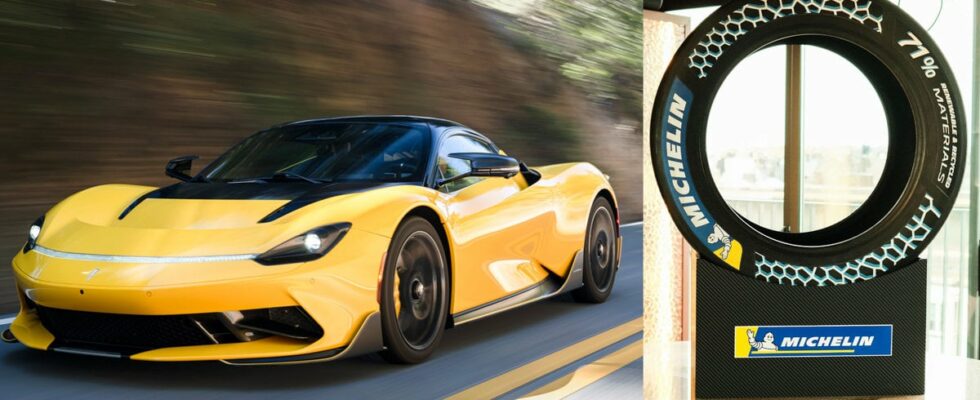The theme for the evening was “From tire to table”, and the idea was that the meal would contain some of the 200 materials found in a tyre.
The EU is now in the starting pits to tackle emissions from tires in road transport. At the same time, the public does not seem to have grasped the important role that tires play.
58 percent respond that they do not reflect on the tires’ climate and environmental impact, and Michelin wants to change that.
As its main weapon to this end, Michelin had its Global Communications Manager for Science and Innovation Cyrille Roget, who offered a number of interesting tire-related anecdotes during the course of the evening.
Therefore, the tires make a difference
In the discussion about the climate footprint of cars and when new models are launched, the focus is often on factors such as fuel, air resistance and weight.
However, according to the data that Michelin shared during the evening, there is reason to raise the role of tires in that discussion more often.
In total, the rolling resistance of the tires accounts for a full 20 percent of the energy consumption in a passenger car, or in other words how much petrol, diesel or electricity the car consumes.
An effective illustration of the significance of this is that the rolling resistance of tires in global road transport accounts for higher carbon dioxide emissions than the entire aviation industry.
DON’T MISS:
Big change for parking in Stockholm – during September
Then you can lose your driver’s license – when you don’t drive
Particulate matter is a significant problem
The emissions of carbon dioxide that can be derived from the rolling resistance of the tires are not the only negative impact that they have on the environment.
A more local effect of a tire rolling is that it wears, and in that crank gives off rubber particles. In total, emissions of tire particles globally amount to a whopping 6 million tonnes.
The car’s tires account for 15 percent of the car’s total emissions.
Cyrille Roget was Michelin’s secret weapon during the dinner – Photo: Michelin Big difference between different tires
It has also been shown that some tires are worse than others when it comes to particulate emissions, and new EU rules are soon to crack down on the worst offenders on the market.
The new rules will put a cap on how much particles a tire can emit over a certain driving distance.
According to figures from the German ADAC, an average tire releases 3.5 kilograms of particles over a mileage of 2,000 miles, while the worst options release a whopping 8 kilograms over the same mileage.
Michelin welcomes the new rules, which may have something to do with the fact that they already build tires that release just 1.5 kilograms over a distance of 2,000 miles.
Many tires are replaced too soon
Tires have also proven to be a major source of unnecessary waste in the automotive industry, and this is one area where we as consumers can really make a difference – by simply buying fewer tyres.
According to Michelin, a well-designed summer tire is safe to use all the way down to the legal minimum limit for tread depth of 1.6 mm. Despite this, a full 50 percent of all tires are replaced before they have even worn down to 3 mm tread depth, according to a study by EY.
Michelin showed off a tire made from 71 percent recycled material – Photo: Michelin
A tread depth of 3 mm can be equated to a tire having a quarter of its life left, and replacing it at this level of wear is thus wasteful from both a wallet and environmental perspective.
According to Michelin’s internal research, as many as 200 million unworn tires are replaced globally a year due to damage and punctures, which could be an argument for developing tires in the future that are constructed in a different way than the ones we have today.
An underreported problem
The tires on our cars clearly play a bigger role in overall emissions than you might think – especially in relation to the limited focus placed on them in the wider environmental debate.
The figures that Michelin shared during the dinner also show that we as consumers can influence the environmental impact of our tires.
The presentation was held in central Stockholm. (Photo: Michelin)
It is partly about choosing tires with a low rolling resistance and low particle emissions, but also about not replacing these before they are really worn out.
However, choosing a tire that is the best combination of environment and performance can be easier said than done. We hope that the wheels of regulation rolling on towards expanded standards will make these choices easier in the future.
DON’T MISS:
Car tax on change of ownership – then you can be cheated
Demand for electric cars is plummeting – plug-in hybrids are increasing
